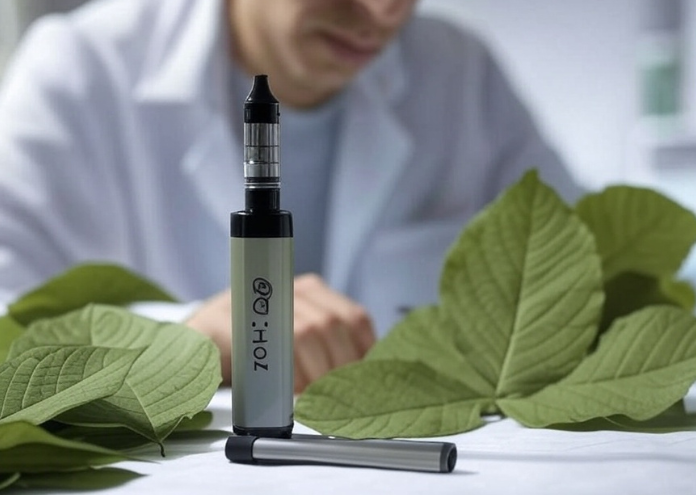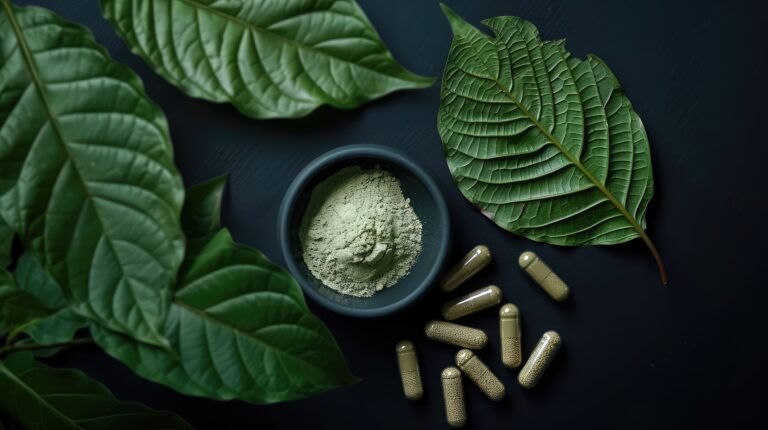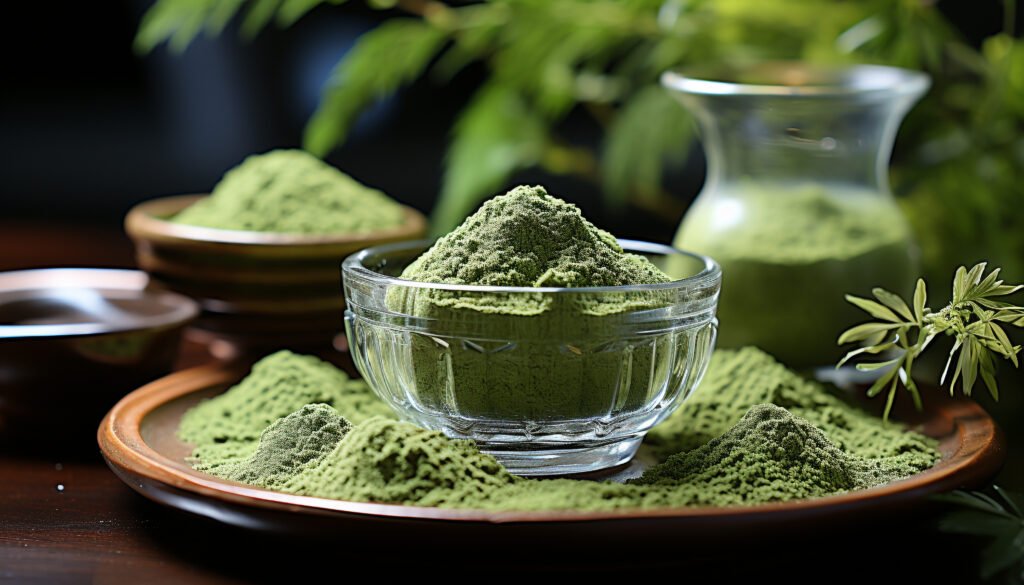The rise of kratom in the wellness and recreational markets has introduced a variety of innovative products, among them the 7 OH vape pen, a device designed to deliver the potent alkaloid 7-Hydroxymitragynine (7OH) in a convenient, inhalable form. Touted for its rapid onset and high potency, the 7OH vape pen has captured the attention of kratom enthusiasts seeking alternatives to traditional powders, capsules, or shots. However, despite its growing popularity, significant questions linger about its safety, efficacy, and long-term effects. With limited research available, experts and users alike are left wondering: is the 7OH vape pen a groundbreaking advancement or an understudied risk? This article explores what the 7OH vape pen is, its appeal, current knowledge gaps, and why comprehensive studies are urgently needed to determine its safety.
What is a 7 OH Vape Pen?
A 7 OH vape pen is a portable vaping device that heats a liquid extract containing 7-Hydroxymitragynine, a key alkaloid derived from the Mitragyna speciosa (kratom) plant. Unlike nicotine or THC vape pens, which dominate the vaping landscape, the 7OH vape pen targets kratom users by focusing on this specific compound, known for its strong interaction with opioid receptors. Kratom naturally contains over 40 alkaloids, with mitragynine being the most abundant, but 7OH—though present in smaller amounts (around 2% of total alkaloids)—is far more potent, estimated to be up to 13 times stronger than mitragynine in receptor binding.
The vape pen typically consists of a battery, a heating element, and a cartridge filled with a concentrated 7OH extract, often flavored to improve palatability (e.g., strawberry-lemon or blueberry). The liquid is vaporized at a controlled temperature, allowing users to inhale the aerosol for quick absorption through the lungs. This method contrasts with traditional kratom consumption, which involves ingestion and a slower onset of effects, making the 7OH vape pen an attractive option for those seeking immediate results.
The Appeal of the 7OH Vape Pen
The 7OH vape pen’s popularity stems from several factors:
- Rapid Delivery: Inhalation bypasses the digestive system, delivering 7OH directly into the bloodstream via the lungs, with effects felt within minutes rather than the 20–40 minutes typical of oral kratom.
- Potency: Concentrated 7OH offers a stronger experience, appealing to users seeking significant pain relief, mood enhancement, or assistance with opioid withdrawal.
- Convenience and Discretion: The pen’s portability and lack of strong odor make it easy to use discreetly in public settings, unlike brewing kratom tea or swallowing bitter powder.
- Flavor Options: Flavored extracts mask kratom’s naturally bitter taste, broadening its appeal to new users.
These attributes align with trends in the broader vaping industry, where convenience and potency have driven the success of nicotine and cannabis vape products. For kratom users, the 7OH vape pen represents a modern evolution of a traditional botanical, promising a tailored and efficient experience.
Current Knowledge and Preliminary Insights
While kratom itself has been studied to some extent, the specific use of 7OH in vape pens remains largely uncharted territory. Existing research provides a foundation but falls short of addressing the safety of this delivery method:
- Therapeutic Potential: A 2020 Johns Hopkins Medicine study, “Natural Herb Kratom May Have Therapeutic Effects And Relatively Low Potential For Abuse Or Harm, According To A User Survey,” surveyed 2,798 kratom users and found that 91% used it for pain relief, 67% for anxiety, and 41% for opioid withdrawal, with 87% of the latter group reporting relief. However, this study focused on general kratom use, not vaping or isolated 7OH.
- Low Abuse Potential: The same study reported that fewer than 3% of users met criteria for moderate or severe substance use disorder, suggesting kratom’s risk profile is lower than that of prescription opioids (8%–12% dependency rate, per the National Institute on Drug Abuse). Yet, concentrated forms like 7OH vape pens could alter this risk due to their potency.
- Pharmacology: Preclinical research indicates that 7OH’s opioid receptor activity contributes to its analgesic and sedative effects, but its mechanism differs from traditional opioids, potentially reducing respiratory depression risk—a key safety advantage. However, these findings come from animal studies or oral administration, not inhalation.
Why More Studies Are Needed On The 7 OH Vape Pen
Despite its promise, the 7OH vape pen raises significant safety concerns that demand rigorous investigation. Here’s why:
1. Inhalation Risks
Vaping introduces unique variables absent in oral kratom use. The heating process can alter the chemical composition of 7OH and its carrier liquids, potentially producing harmful byproducts. For example, studies on nicotine and cannabis vaping have identified risks from additives like propylene glycol (PG) and vegetable glycerin (VG), which, when heated, can form carcinogens such as formaldehyde and acetaldehyde. A 2017 study in the Journal of Complementary and Alternative Medicine found that PG and PEG (polyethylene glycol) in cannabis vape pens produced high levels of these toxins at 446°F, a temperature relevant to kratom vaping. While 7OH vape pens may use similar carriers, no studies have tested their specific aerosol profiles or inhalation toxicology.
2. Potency and Overdose Potential
The concentrated nature of 7OH in vape pens amplifies its potency, narrowing the margin between therapeutic and excessive doses. Overdose risks, though rare with kratom overall (fewer than 100 U.S. deaths reported in 2017, mostly polydrug-related), could increase with vaping due to rapid absorption and lack of clear dosing guidelines. Symptoms like nausea, dizziness, or respiratory depression—seen with high kratom doses—could be more pronounced with 7OH vape pens, yet no data quantifies this risk.
3. Long-Term Effects
Kratom’s long-term safety remains understudied, and vaping adds another layer of uncertainty. Chronic inhalation of 7OH aerosols could affect lung health, potentially causing irritation, inflammation, or conditions like bronchiolitis obliterans (seen in some nicotine vaping cases). The Johns Hopkins study noted mild side effects (e.g., constipation, lethargy) in 33% of users, with fewer than 10% experiencing withdrawal, but these findings don’t account for vaping’s distinct delivery method or 7OH’s heightened potency.
4. Product Variability and Regulation
Kratom’s unregulated status in the U.S. means 7OH vape pens vary widely in quality, purity, and labeling accuracy. Contaminants like heavy metals, pesticides, or residual solvents from extraction—issues identified in cannabis vaping—could be present, amplifying health risks. Without FDA oversight or standardized manufacturing, users rely on manufacturer claims, leaving safety in question.
5. Interaction with Other Substances
The potential for 7 OH vape pens to interact with alcohol, medications, or other drugs is unknown but critical, given kratom’s opioid-like effects. The Johns Hopkins study cautioned that rare severe effects (e.g., seizures, liver damage) often involved polydrug use, a scenario vaping could exacerbate due to its rapid delivery.
The Call for Research
To address these gaps, comprehensive studies are essential:
- Toxicological Analysis: Examine the aerosol produced by 7OH vape pens for harmful byproducts, comparing it to oral kratom and other vaping substances.
- Clinical Trials: Conduct human studies on short- and long-term effects of 7OH inhalation, focusing on lung health, overdose thresholds, and dependency risks.
- Pharmacokinetics: Investigate how vaping alters 7OH’s absorption, metabolism, and potency compared to ingestion.
- Regulatory Standards: Develop benchmarks for safe manufacturing, testing for contaminants, and accurate labeling to protect consumers.
Conclusion | The 7 OH Vape Pen
The 7 OH vape pen offers an intriguing blend of potency and convenience, appealing to kratom users seeking a modern alternative. Its potential for pain relief, mood enhancement, and opioid withdrawal support echoes broader kratom benefits, but its safety remains a gray area. Without robust studies, users are left navigating uncharted waters, balancing anecdotal promise against unknown risks. As kratom’s popularity grows—used by an estimated 10–16 million Americans—the 7OH vape pen underscores the urgent need for science to catch up with innovation. Until then, caution, education, and sourcing from reputable manufacturers are the best tools for those drawn to this potent yet enigmatic device. The question isn’t just whether the 7 OH vape pen works—it’s whether it’s safe, and only research can provide the answer.
CLICK HERE to read more articles on Kratom News & Research














